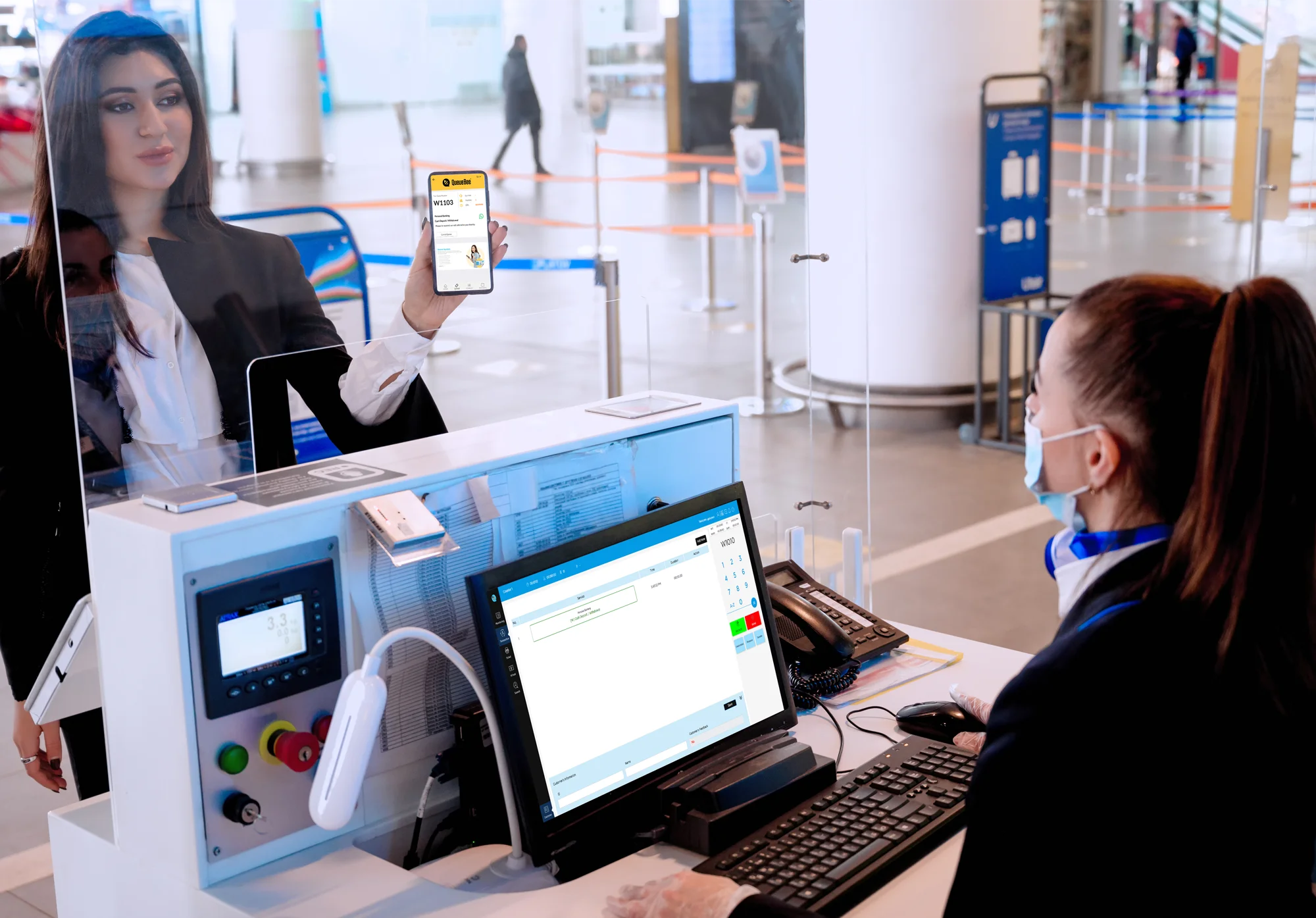In today's fast-paced world, the way businesses manage customer queues and waiting times can significantly influence customer satisfaction and overall experience. No matter the sector—be it retail, healthcare, education, or any other—customers inevitably spend time waiting for services, checkouts, or problem resolution. While it's challenging to eliminate waiting time entirely, there's a strategic advantage in managing it effectively.
Queue management system emerge as a pivotal solution to this universal challenge. By optimising the waiting experience, these systems not only streamline operations but also transform the inevitable wait into an opportunity to impress and engage customers. The right queue management strategy can keep your lobby organised, reduce customer frustration, and enhance the efficiency of your service delivery.
This guide aims to provide a comprehensive understanding of queue management system, delving into their importance, functionalities, and how they can revolutionise customer service across various industries. Whether you're looking to improve service delivery, enhance customer satisfaction, or streamline operational efficiency, understanding the fundamentals of queue management is the first step toward creating more pleasant and productive waiting environments for both customers and staff.

A Queue Management System (QMS) is an integrated solution designed to streamline the waiting experience, ensuring customers are served in a timely and orderly fashion. This system plays a crucial role in managing customer flow and enhancing their journey from start to finish. By combining sophisticated software with practical hardware, a QMS enables businesses to efficiently organise service delivery, manage customer and staff interactions, and collect insightful data to continuously refine the customer experience.

At its core, a queue management system is both a strategy and a technology that organises customer traffic and service interactions in a manner that minimises wait times and improves service efficiency. It encompasses tools and processes to manage customer flow, ensuring each person receives prompt and fair service. Beyond mere organisation, a QMS is about creating positive waiting experiences, transforming potential customer frustration into satisfaction and loyalty.
Queue management system offer a range of functionalities tailored to diverse business needs, from simple number tickets and call-forward systems to sophisticated appointment scheduling and virtual queuing technologies. Key functionalities include:
The sophistication of a QMS can vary widely, incorporating:

Together, these software and hardware elements form a cohesive system that not only manages queues but also elevates the customer experience, ensuring businesses can deliver exceptional service seamlessly and efficiently.
Queue Management System (QMS) come in various forms, each designed to address different aspects of the queuing experience. Understanding the distinctions between these systems can help businesses select the most appropriate solution for their operations. The main types include Physical Queues, Virtual Queues, and Hybrid Queues.
A Queue Management System optimises the customer service process by organising how customers wait for and receive services. This system enhances the customer experience by reducing physical wait times and streamlining service delivery. Here’s a step-by-step overview of how it typically works:
Implementing a Queue Management System (QMS) transforms how businesses manage customer flow and service delivery, significantly enhancing both customer satisfaction and operational efficiency. Here are the top three benefits:
Queue Management System are transformative tools for numerous sectors, streamlining operations and enhancing customer experiences. Here are three key industries examples where the impact of a QMS is being implemented:

In the healthcare industry, where patient experience and service efficiency are of utmost importance, Queue Management System can revolutionise how care is delivered.
The banking and finance sector can leverage Queue Management System to enhance customer service, security, and operational efficiency:


In sectors of retail and or restaurants, Queue Management System are instrumental in enhancing customer service, operational efficiency, and the overall consumer experience:
Selecting the right Queue Management System (QMS) is crucial for enhancing customer satisfaction, improving service delivery, and optimising operational efficiency. Here's what to consider when choosing a QMS and its supplier:
When selecting a supplier for your QMS, consider the following key factors:
When evaluating QMS options, focus on the following essential aspects:
By carefully evaluating these factors, you can select a Queue Management System and supplier that best fits your organisation's needs, ensuring a smooth integration and a significant enhancement to your service delivery and customer experience.
Implementing a Queue Management System (QMS) is a transformative endeavour that enhances service delivery and customer satisfaction. While the process may seem daunting, QueueBee offers end-to-end consultancy services to ensure a smooth transition. Our dedicated project managers and consultants are equipped to assist you every step of the way, making the implementation as seamless as possible. Here's a step-by-step guide to effectively implementing a QMS with QueueBee's expert support:
Elevate your service delivery and your customer journey with QueueBee’s advanced Queue Management System. Our end-to-end consultancy services and expert support ensure a seamless implementation, tailored specifically to your business needs.


Security | Quality | Reliability